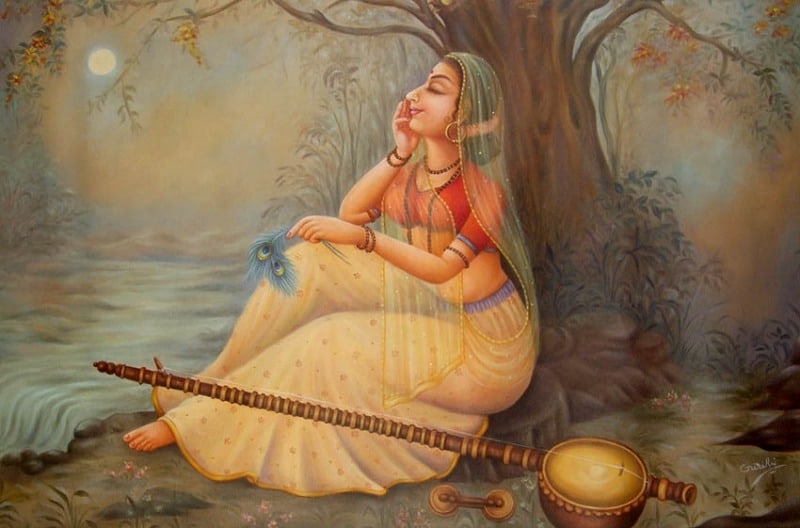The Life and Work of Mirabai
This article was first published in the print edition of Manushi Journal. (Issue-50-52, Jan-Jun 1989)
Nam Rahega kam son
Suno sayane loye
Mira sut jayo nahin
Shishya na mudo koye
“One’s name will live on through one’s work, consider this if you are wise; Mira did not give birth to a son nor did she have any disciples.” (popular saying)
THE culture of north India values women mainly as mothers of sons. Yet it honours and reveres Mira, a childless woman (widowed or separated) who is identified in the popular imagination as having rebelled against husband and in- laws. In the country as a whole, she is the best known of all women poets. Versions of her songs are sung in Gujarati, Hindi and its dialects, Punjabi, Bhojpuri, Bengali, Oriya. Some are incorporated into the Guru Granth Saheb. Her songs have been so much a part of living oral traditions that it is not possible to establish definitively the authenticity of all the songs attributed to her. Many of the more popular songs appear in different forms.1 Mira’s work is also part of written literary tradition. She is placed amongst the half dozen greatest bhakta poets in what has today come to be called Hindi…






